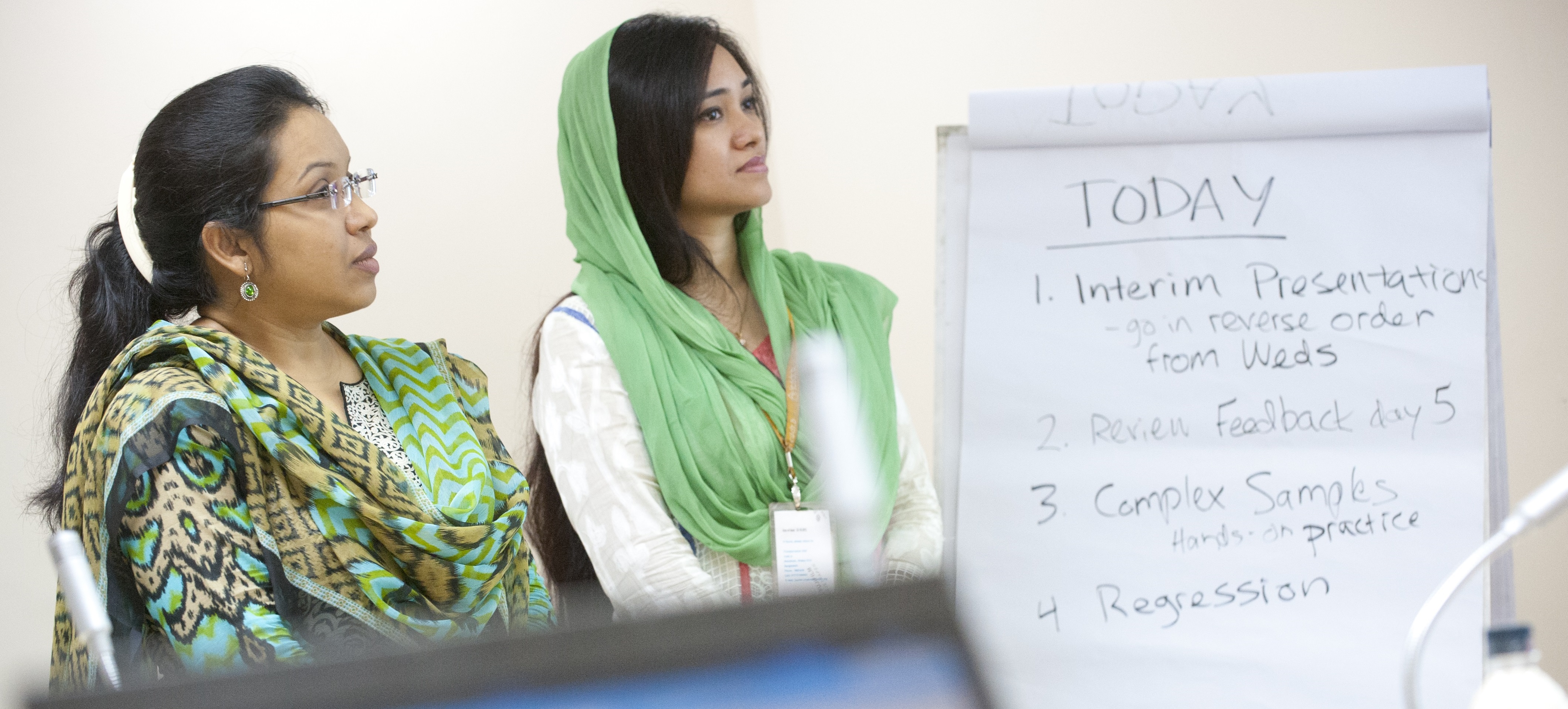Journal Articles
Search our database of 1000's of peer-reviewed journal articles that feature DHS data.
Featured Studies
Featured research topics go beyond a single research paper and often include multiple publications and user-friendly summaries and dissemination materials.
The DHS Fellows Program
Researchers in DHS countries work with DHS analysts to design, analyze, and write a publishable paper.
DHS Analysis Blogs
Read more about our recent research, innovative methods, and success stories.
Research and Further Analysis

The DHS Program's in-house Research and Analysis team conducts rigorous, timely, and innovative mixed-methods research on topics related to global public health, demography, and social epidemiology. Our team also trains, mentors, and closely collaborates with fellow researchers and stakeholders who are driven to utilize DHS Program surveys and other survey data to inform programs and policies in various countries and contexts.
Visit the publications search for a full list of publications. Also, go to the journal articles search for a full list of published journal artilcles that feature The DHS Program data.
DHS Research Reports
Jan 2012
Revising Unmet Need for Family PlanningUnmet need for family planning is defined using survey data as the percentage of women who do not want to become pregnant but are not using contraception.
Topics: Family Planning
Dec 2011
The Impact of Television and Radio on Reproductive Behavior and on HIV/AIDS Knowledge and BehaviorThis is a study of the association of radio and television exposure with different aspects of reproductive behavior and with knowledge, attitudes, and behavior in connection with HIV/AIDS.
Topics: Family Planning, HIV/AIDS
Sep 2011
The Impact of Contraceptive Failure on Unintended Births and Induced Abortions: Estimates and Strategies for ReductionUsing data from 20 recent Demographic and Health Surveys (Armenia 2005, Azerbaijan 2006, Bangladesh 2004, Colombia 2010, Dominican Republic 2002, Egypt 2008, India 2005-06, Indonesia 2007, Jordan 2007, Kenya 2003, Malawi 2004, Moldova 2005, Morocco 2003-04, Peru 2004-08,[1] Philippines 2003, Tanzania 2004-05, Turkey 2003, Ukraine 2007, Vietnam 2002, and Zimbabwe 2005-06), we estimate 1) the impact of contraceptive failure on unintended births and induced abortions, and 2) levels of unintended births and induced abortions that could be achieved if current family planning users adopted more effective contraceptive methods.
Topics: Family Planning
Sep 2011
The Use of Family Planning Methods in Mali: The How and Why of Taking ActionThis study examines the situation of women in Mali who use modern contraceptive methods and compares this to the situation of women who do not, in order to understand how and why women take action to use family planning.
Topics: Family Planning
Sep 2010
Birth Spacing and Limiting ConnectionsContraception can be used both for spacing and for limiting of births.
Topics: Family Planning
Feb 2010
Desired Number of Children: 2000-2008This report is a review of reproductive preferences in 60 countries based on data from Demographic and Health Surveys (DHS) conducted between 1998 and 2008.
Topics: Family Planning
Sep 2009
Levels, Trends, and Reasons for Contraceptive DiscontinuationContraceptive discontinuations contribute substantially to the total fertility rate, unwanted pregnancies, and induced abortions.
Topics: Family Planning
Sep 2008
Integrating Family Planning and VCT Services in Ethiopia: Experiences of Health Care ProvidersThis study was undertaken primarily to understand what effect the efforts to integrate family planning and VCT services in health facilities had on health care providers' work and service delivery practices in two regions of Ethiopia: Oromia and Amhara.
Topics: Family Planning
Aug 2008
Contraceptive Use, Breastfeeding, Amenorrhea and Abstinence During the Postpartum Period: An Analysis of Four CountriesThis study examines the adoption of contraceptive use after a birth, using reproductive calendar data from Demographic and Health Surveys (DHS) in Kenya, Indonesia, the Dominican Republic, and Peru for women age 15-49.
Topics: Family Planning
Dec 2007
Contraceptive Trends in Developing CountriesThis study examines trends and differentials in key family planning indicators in 35 developing countries.
Topics: Family Planning